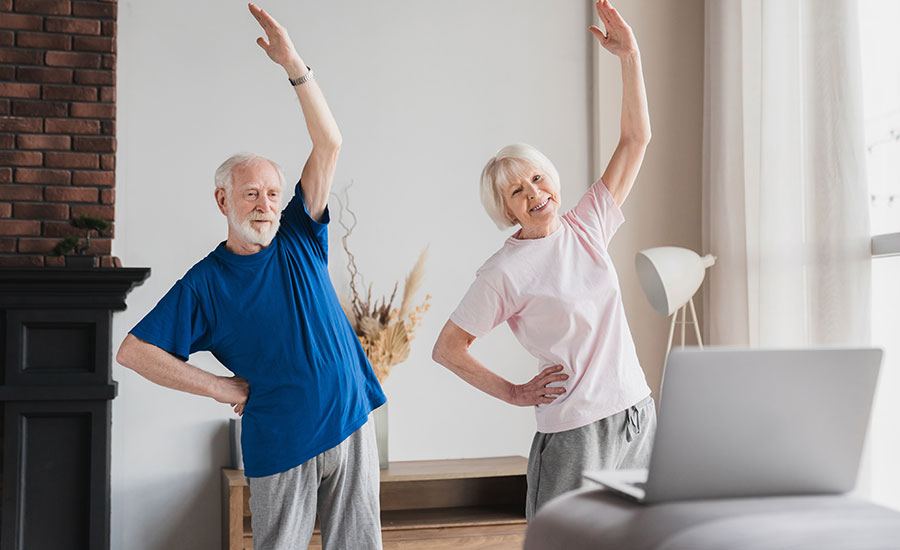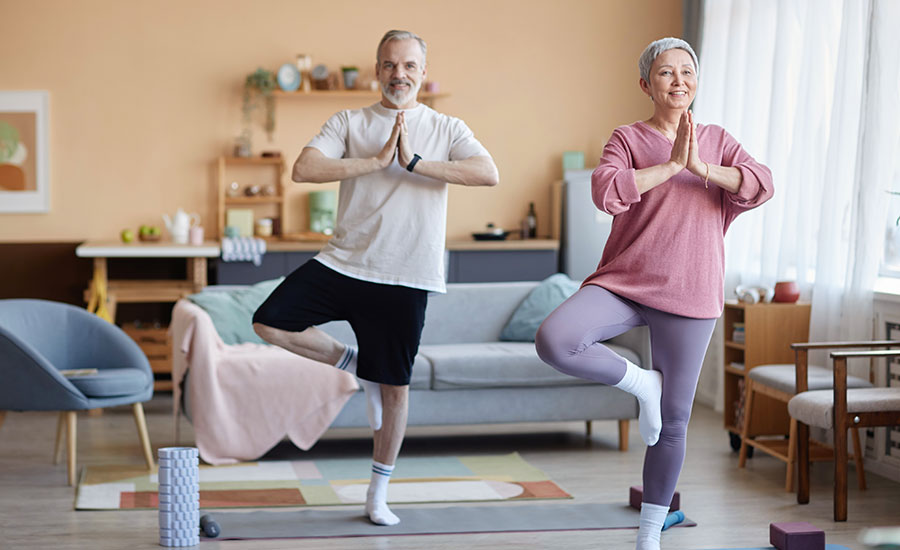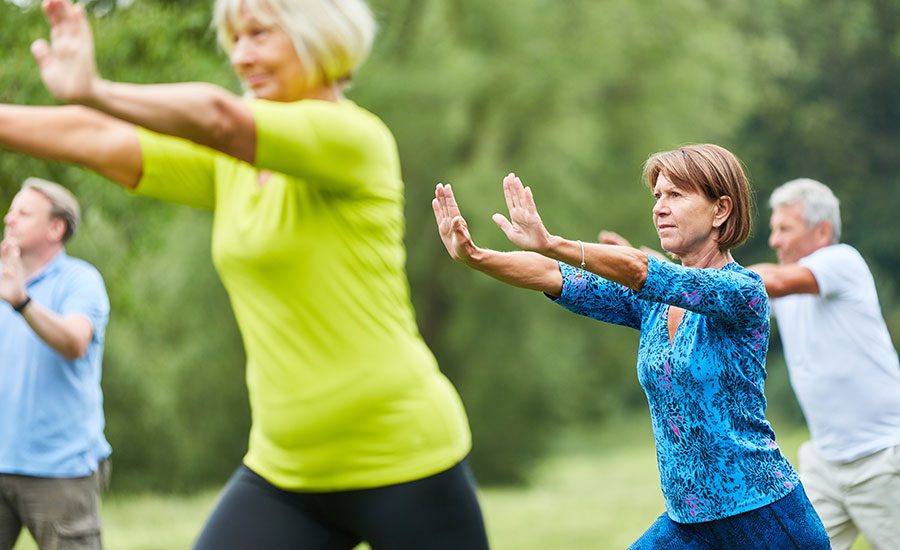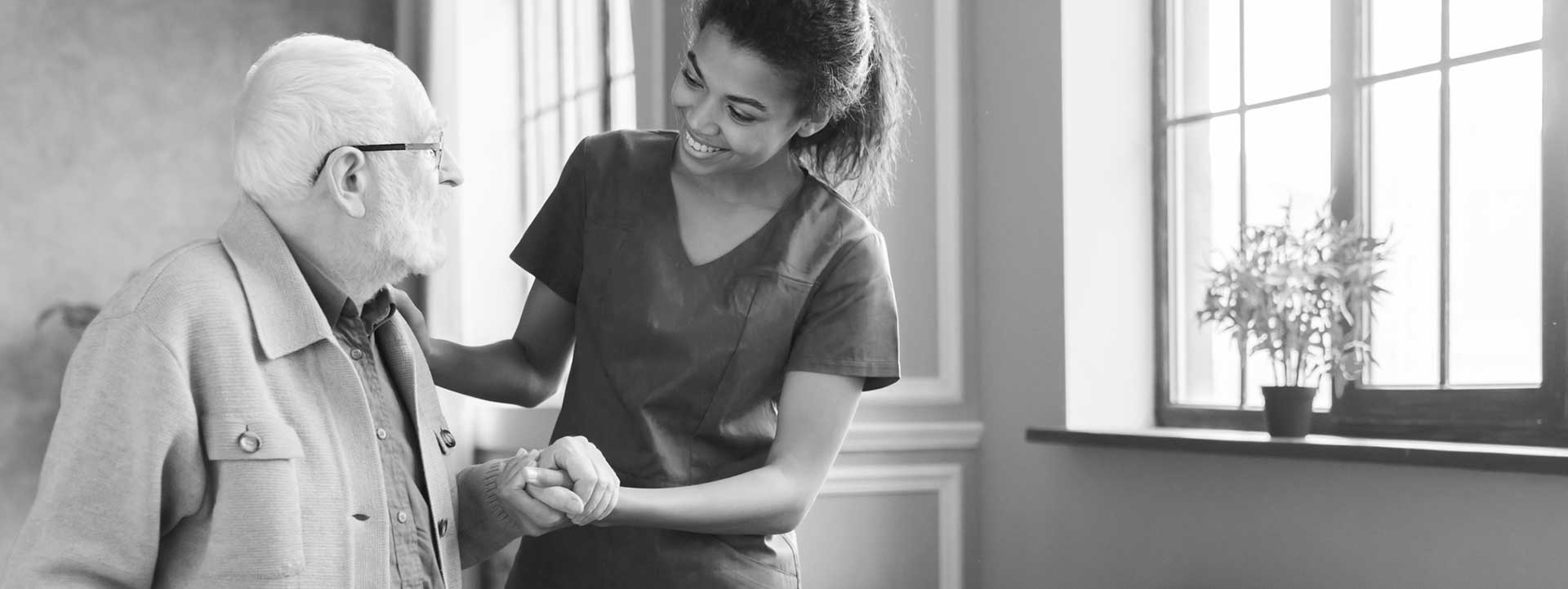12 Easy Balance Exercises for Seniors: A Step-by-Step Guide

Whether it’s from getting distracted as a child or tripping over a cable wire as a young adult, we’ve all lost our balance at some point.
However, as we age, these issues become more frequent and troublesome. What does this mean for your elderly loved one, and how can they address them?
In this article, we’ll explore the primary causes of balance issues in the elderly, share 12 simple balance exercises for seniors, highlight their key benefits, and explains how our senior care services can help elderly individuals regain stability and confidence.
Table of Contents
Top Causes of Balance Issues in the Elderly
From fall risk medications to certain medical conditions, here are common causes of balance issues in the elderly:
- Medications: Consult your doctor if your elderly loved one experiences balance issues while on medication, such as beta-blockers or diuretics, which could affect their stability. Consider switching medications, adjusting the dosage, or exploring alternatives to minimize side effects.
- Inner Ear Problems: The semicircular canals in the inner ear, filled with fluid and lined with hairlike sensors, maintain balance. Damage to these canals can lead to dizziness and balance issues.
- Alcohol: Alcohol affects the inner ear’s function, leading to dizziness and balance problems.
- Sudden Changes in Blood Pressure: As people age, their bodies become less efficient at circulating blood. Seniors may experience a drop in blood pressure when standing up quickly or moving suddenly, temporarily affecting their balance. Typically, symptoms subside as blood pressure stabilizes.
- Neurological Conditions: Health conditions, such as Parkinson’s disease or multiple sclerosis, increase the risk of balance problems. If your senior parent or loved one experiences reoccuring falls, their doctor will diagnose and treat the underlying issue to enhance their balance.
- Decreased Circulation: Poor blood circulation can slow oxygen delivery to the brain, muscles, and organs, occasionally leading to balance issues.
- Low Blood Sugar: For those managing diabetes with insulin, sudden drops in blood sugar can cause sweating and dizziness, further impacting balance.
- Low Iron Levels: Iron is crucial for producing red blood cells that transport oxygen. Chronic low iron may lead to anemia, a condition characterized by balance loss, weakness, and pale skin.
Symptoms of Balance Disorders in the Elderly
Symptoms of balance disorders in the elderly include:
- Dizziness or Vertigo: A spinning sensation of yourself or your surroundings
- Lightheadedness: Feelings of faintness or floating
- Staggering: Difficulty walking in a straight line
- Blurred Vision: Challenges with focusing or transient vision clarity
- Confusion or Disorientation: Difficulty understanding time, place, or identity
- Falling or the Sensation of Falling: Sudden, uncontrollable drops or feelings that a fall is imminent
12 Balance Exercises for Seniors
Exercise is crucial at all life stages, especially in the twilight years.
Staying mobile, strong, and steady allows elderly individuals to remain independent, boosting their quality of life and confidence.
Seniors can exercise in shoes for better grip or barefoot to strengthen their feet. A yoga mat adds cushioning and prevents slipping. Whenever possible, a family member or close friend should supervise and support their exercises.
Simple balance exercises for the elderly include:
1. Rock the Boat
- Stand with your feet hip-width apart.
- Extend your arms to the sides.
- Lift your left foot, bending your knee to bring your heel toward your bottom.
- Hold for up to 30 seconds.
- Switch to the right foot and repeat.
- Perform three repetitions on each side.
2. Weight Shifts
- Position your feet hip-width apart.
- Transfer your weight onto your right foot and lift your left foot.
- Maintain this stance for up to 30 seconds.
- Switch and replicate on the opposite side.
- Complete three sets for each side.
3. Single Leg Balance
- Stand with your feet hip-width apart, hands on your hips, balancing your weight evenly.
- Lift one leg, bending it at the knee, and hold for up to 30 seconds.
Tip: For better support, feel free to hold a piece of furniture before starting.
4. Tree Pose
- Stand upright beside a stable support.
- Transfer your weight onto your right foot, keeping your posture straight.
- Position the left foot’s heel to the side or rest the sole against the right ankle, shin, or thigh.
- Bring your hands together in front of your chest or extend them outward for additional balance.
- Maintain this pose for up to one minute.
- Switch sides and repeat with your left foot supporting.

5. Tightrope Walk
- Lay a string or ribbon on the ground.
- Extend your arms to the sides.
- Walk along the string, stepping directly on it.
- Take at least 15 steps.
- Repeat the activity as needed.
6. Flamingo Stand
- Shift your weight onto your right foot, keeping your back straight and core engaged.
- Lift your left foot and extend your leg forward without locking your right knee.
- Hold this pose for 10 to 15 seconds while maintaining your balance.
- Switch sides and repeat with your right foot.
7. Lunges
- Stand in a split stance, placing your right foot about two to three feet in front of your left.
- Keep your torso straight, shoulders back and down, core engaged, and hands resting on your hips.
- Bend your knees and lower your body until the back knee is a few inches from the floor.
8. Back Leg Raises
- Stand facing the back of a chair and hold it with both hands for support.
- Extend one leg straight behind you, lifting it slightly while keeping your back straight.
- Slowly lower the leg back down and repeat with the opposite leg until you complete the set.
9. Heel-to-Toe Walk
- Stand with your heels pressed against a wall.
- Place your left foot in front of your right, touching your left heel to your right toes.
- Step your right foot in front of your left, touching your right heel to your left toes.
- Repeat 20 times.
10. Heel-Toe Raises
- Place both hands on your walker.
- Lift both heels and balance on the balls of your feet for 3 seconds.
- Shift your weight to your heels and raise your toes.
- Repeat 10 to 20 times.
11. Forward and Backward Tilt
- Stand with your feet on the outer edges of the balance board.
- Shift your weight forward until the front of the board touches the floor and hold for a few seconds.
- Continue tilting back and forth slowly for one minute.
12 Tai Chi
- Stand with your feet shoulder-width apart and arms relaxed by your sides.
- Shift your weight to one foot and step out with the other.
- Lean forward slightly, lifting your arms over your head in a wide arc.
- Relax your arms back down by your sides, keeping your wrists facing upward, and bend your knees slightly.
- Twist your torso to the right, extending your arms outward in a large circular motion.
- Bring your right hand toward your left elbow, drawing your right foot closer to your left.
- Step sideways with your right foot to reset the position.

Key Benefits of Balance Exercises for Seniors
Balancing exercises for seniors offer different benefits, enhancing both their physical and mental well-being:
- Build Strength: Balance exercises help elderly individuals strengthen their muscles, particularly in the legs and core. Strengthening exercises that involve balance, like tai chi, force the body to stabilize itself.
- Improve Posture, Stability, and Coordination: Posture and coordination deteriorate with age, leading to a higher risk of falls. Balance exercises can counteract these effects by improving the body’s control and alignment. Exercises like the tree pose can make significant improvements in these areas.
Support Your Elderly Loved One’s Stability With Always Best Care
The exercises we mentioned can support the natural alignment of your senior loved one’s body, helping them stay healthy and flexible as their muscles and bones naturally weaken.
Remember, exercise is just one component of maintaining overall wellness for the elderly. A balanced diet and ample mental stimulation are also pivotal in keeping them active and healthy.
At Always Best Care, we deliver superior care, unwavering support, and reliable assistance to the elderly community.
Our services extend beyond just promoting simple exercises. We focus on the unique needs of each individual, delivering personalized care plans that incorporate tailored fall prevention strategies for seniors.
We develop these plans from comprehensive fall risk assessments using our Balance Tracking System. Our skilled caregivers ensure the safety and independence of your loved one while maintaining their dignity.





